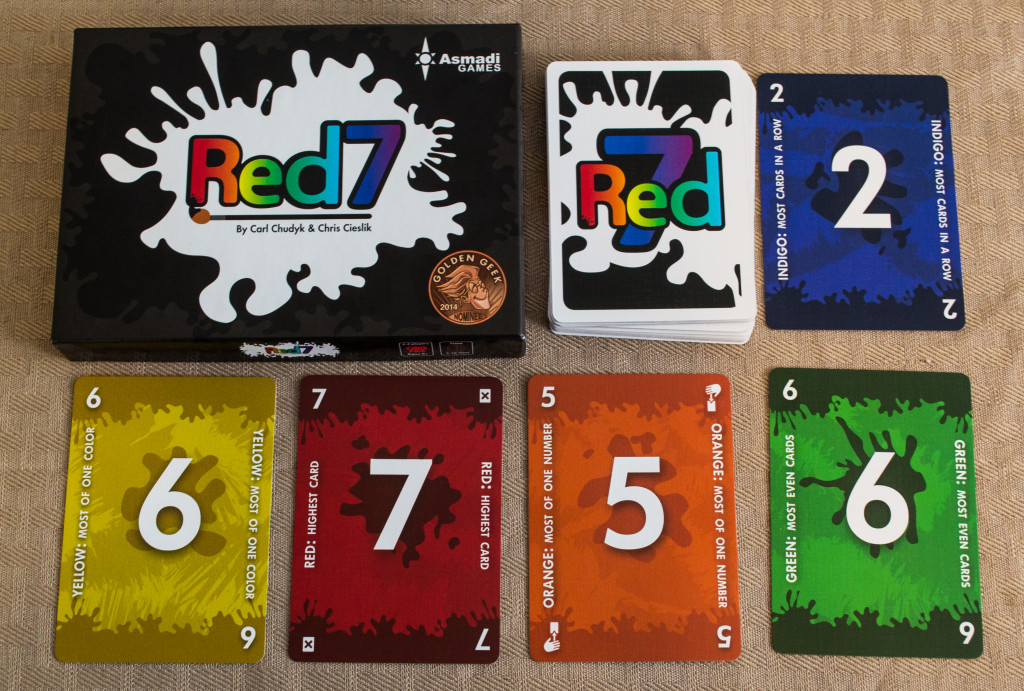Firstly, let’s get something cleared up. When I refer to “Red7” in this article, I’m talking about the card game, not the pilot named “Elyhek Rue” who flew as “Red Seven” during the Battle of Yavin (may he rest in peace). I know, I know, it’s easy to get the two mixed up. Count yourself lucky that you know someone as knowledgeable as me who can help you out with such things. Yeah. At any rate, “Red7” tasks players with having the best card at the end of their turn…or be eliminated. Sounds simple, but holy heck there’s certainly more going on here than meets the eye.
Components
The game includes 49 cards and a rule book. The cards are numbered 1-7, in each of seven rainbow colors. A 7 is always higher than a 6, but when comparing two 6s, a Red 6 is higher than an Orange 6, and so on down the color spectrum (Red, Orange, Yellow, Green, Blue, Indigo, Violet).
Setup & Gameplay
Setting up the game is fairly simple in that players simply shuffle the deck and receive a hand of seven cards. Then, one more card is dealt face up in front of each player to start their palette. A canvas pile is started with the “You are Playing Red” card. The top card of this pile determines the rules are at that point in time. The player with the highest card on their palette is currently best at red, so the player to their left goes first.
On a player’s turn, they’ll take ONE of the following actions:
1. Play a card face up from their hand to their palette.
2. Discard a card from their hand to the canvas to change the game to the rule listed on the card. The player must be “winning” after this occurs in order to take this action.
3. Play a card from their hand to their palette and then discard a card to the canvas. The player must be “winning” after this occurs in order to take this action.
4. Do nothing and lose. If their hand is empty, they must do this.
If the active player is not winning the game at the end of their turn, they are out of the round. In order to be winning, your palette must contain more cards that meet the canvas rule than anyone else. In case of a tie, whoever has the highest card following the canvas rule is winning. The last player remaining wins the round.
Editor’s Note: The above doesn’t cover all of the rules found in the manual, but should give you an idea as to how the game is played. For example, there are advanced rules that allow players to draw cards under certain conditions as well as score points.
The Review
“Red7” is like “Fluxx” in the sense that it can be involved, convoluted, and messy at times. Luckily, it plays much faster reducing the amount of time needed to keep track of everything. Games can be slightly longer if you opt to play using the advanced rules, which allows players to draw cards under certain conditions. There’s also an optional rule that makes use of the icons listed on the odd-numbered cards, forcing players to take the listed action when these cards are played. It’s a small adjustment to the basic rules but succeeds in adding even more chaos to an already crazy game. All of the suit colors have different symbols and the name of the color is even written on the card, so colorblind folks need not worry. It is possible to play with five or six players, but you may want to mess around with the rules a bit in order to find the best balance. For ten bucks, this card game was a pretty good buy.
Final Verdict: 8/10
—

